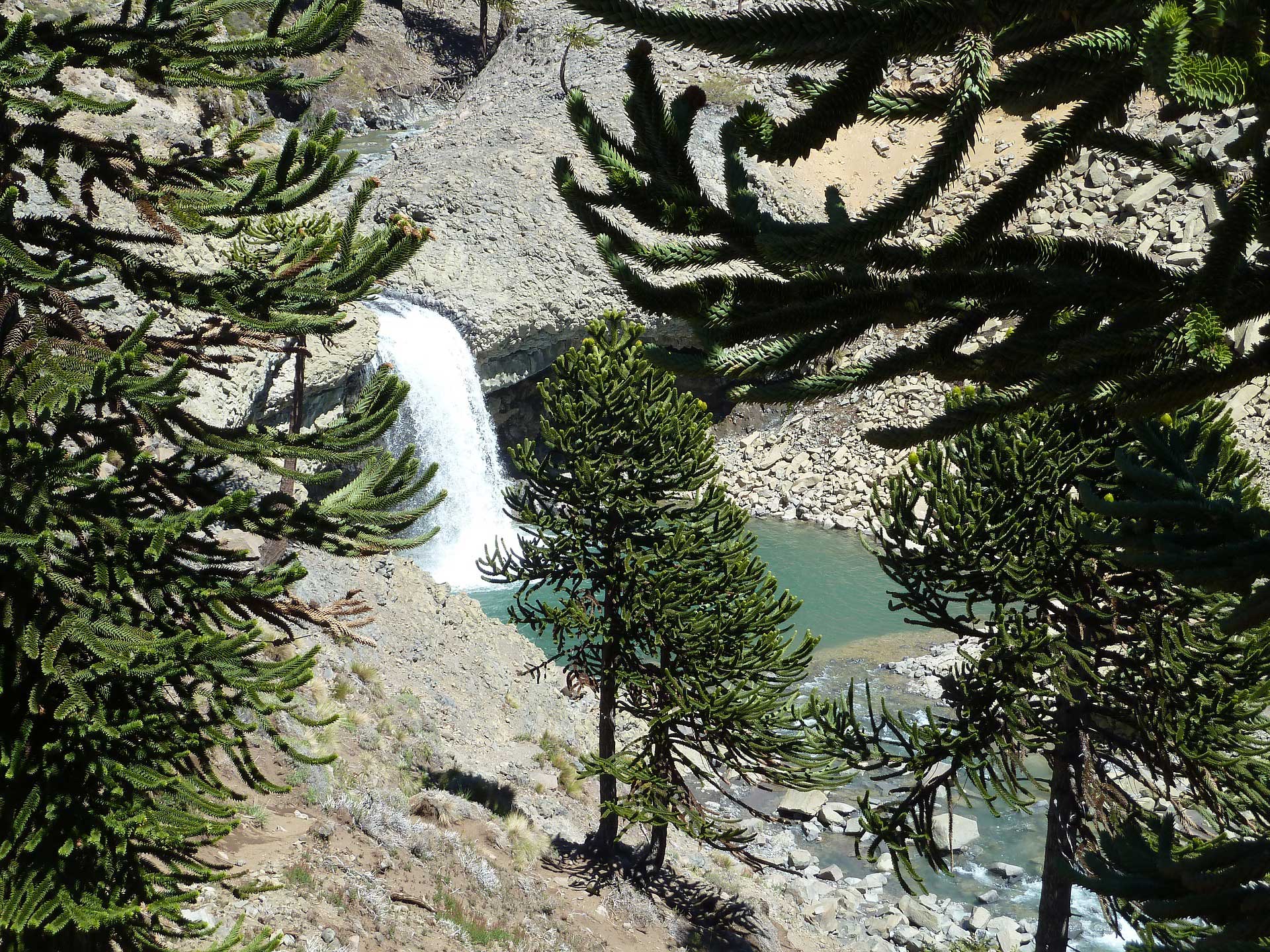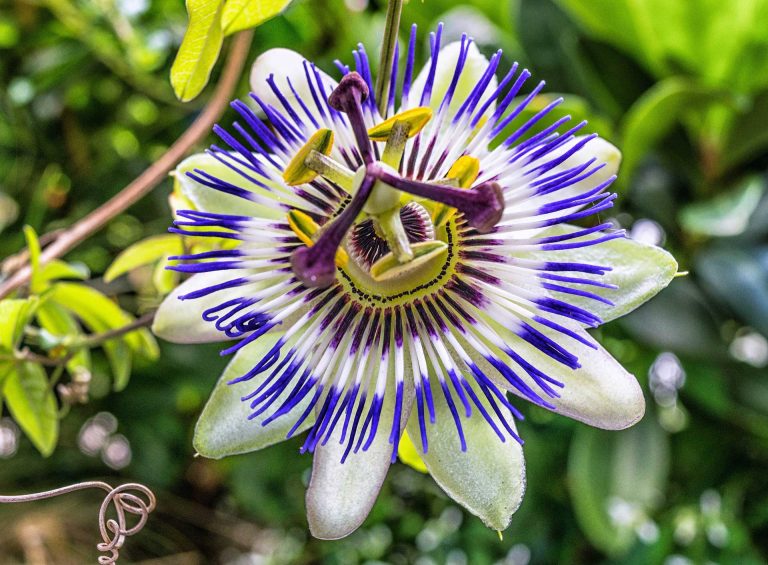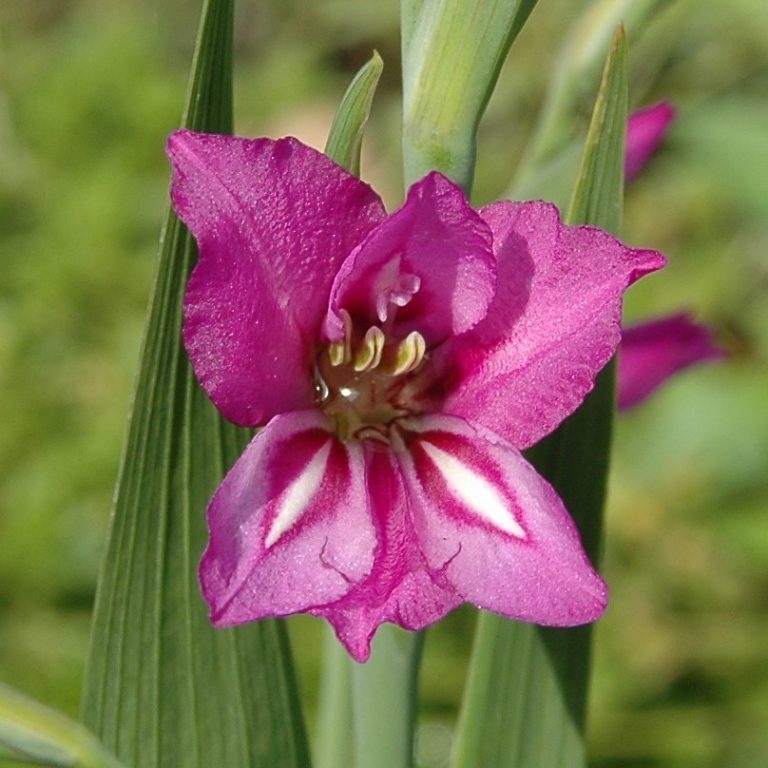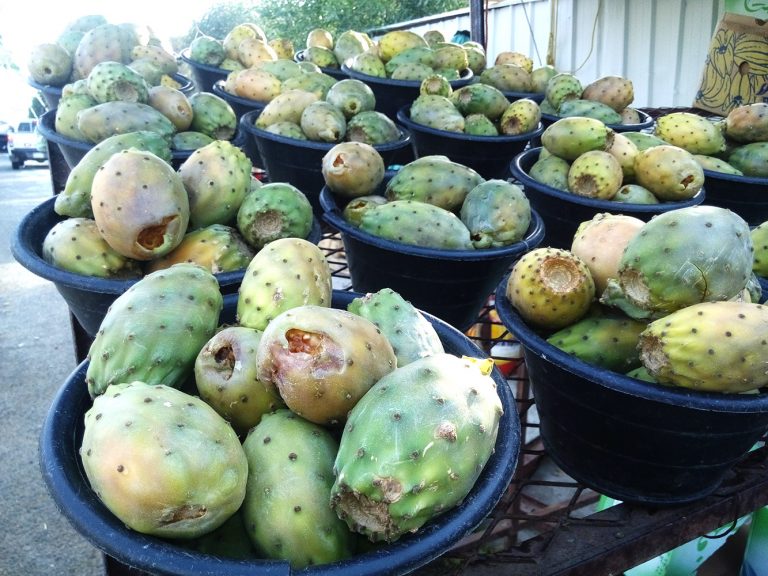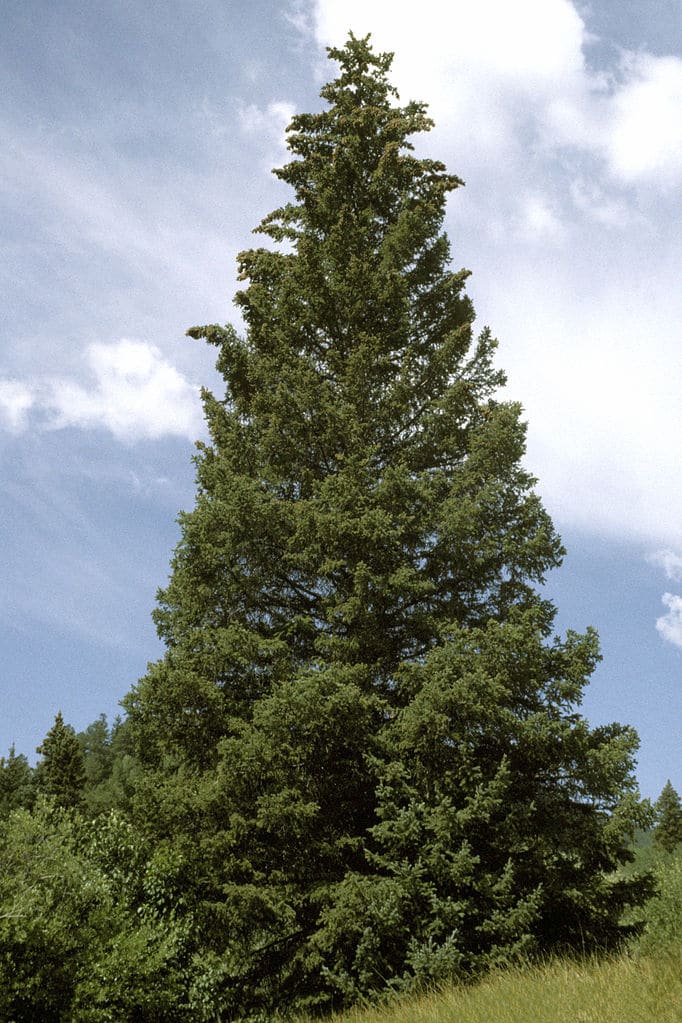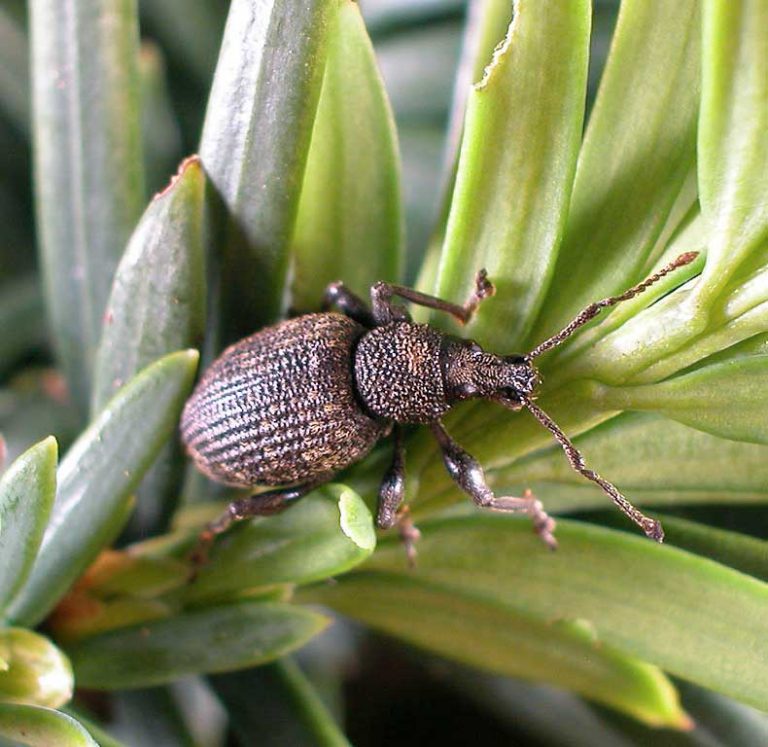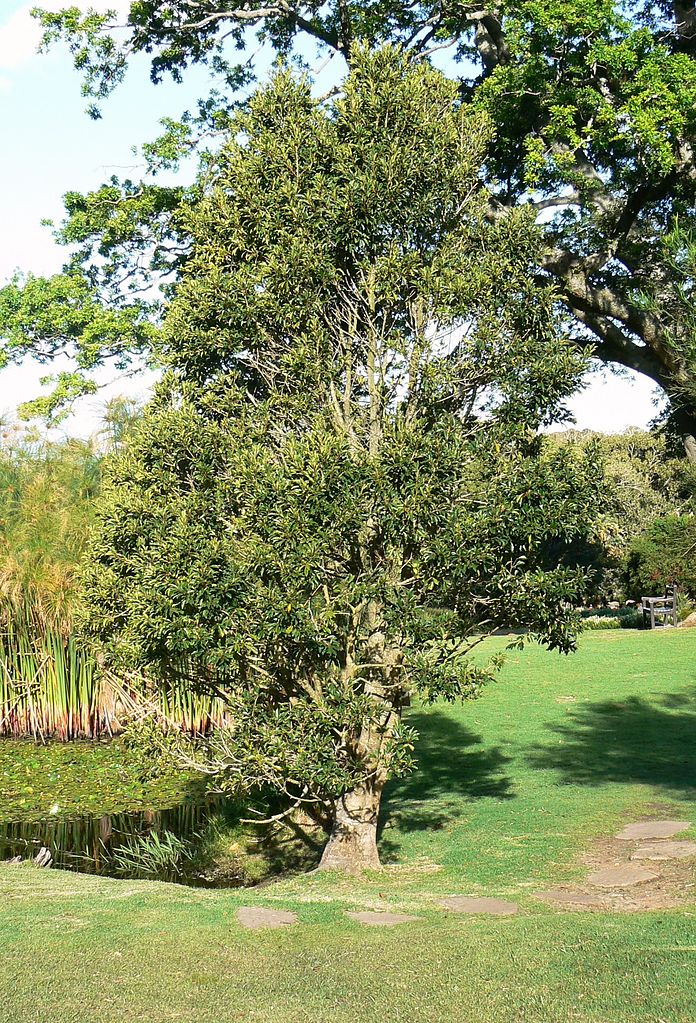Monkey Puzzle
Scientific Classification
| Kingdom: | Plantae |
| Division: | Pinophyta |
| Class: | Pinopsida |
| Order: | Pinales |
| Family: | Araucariaceae |
| Genus: | Araucaria |
| Species: | A. araucana |
| Binomial name: | Araucaria araucana |
Araucaria Araucana is generally named monkey puzzle tree, Pehuen, Chilean pine, or monkey tail tree. This tree is an evergreen one, growing to a height of40 m (130 ft.), and the diameter of its trunk is 2 m (7 ft.). Among the Araucaria conifer genus, Araucaria araucana is the hardiest variety. On account of the antique variety of this tree, at times, it is depicted as a living fossil.
This tree was found first in Chile in the 1780s. In 1782 this tree was named as Pinus Araucana by Molina. The source of this trendy name in English speech ‘monkey puzzle’ was obtained from its previous fostering in Britain in around the 1850s, when this variety was not yet common in gardens and known only by few. At a place in Pencarrowgarden, close to Bodmin in Cornwall, the possessor of a little specimen of this tree was exhibiting it with pride to a group of his comrades, when one among them passed a remark like ‘it would puzzle a monkey to climb that.’ Since this typical one was not known by any well known name, initially, it was named ‘monkey puzzler and later ‘monkey puzzle.’
This Monkey Puzzle tree is a variety of evergreen conifers indigenous to the temperate rain forests of southern central Chile and neighboring places in Argentina. The fully grown trees are enveloped with spiky, leather-like leaves, and grow to nearly 50m height, with a life expectancy of more than 1000 years. Similar to other conifers, this one too produces cones and every cone has 120 to 200 seeds named “pinones”.
This variety gained social and historical importance. Penance, which is edible, became an essential source of food for the natives of Pehuenche, belonging to the Central southern part of Chile. The wood of the monkey puzzle is highly resistant to mechanical properties and reasonably resistant to decay due to fungus. Monkey wood is used for constructing bridges, roofs, beams, piers, boat structures, furniture, veneers and plywood.
The foliage of the monkey puzzle tree is tough and shiny, with spikes; its tips are sharp and grow vertically up in the form of whorls. Habitually, they are open and airy, big cones are seen in male as well as female specimens. This is a big tree, uncommonly and at times it is explained as frightening. Many more describe this monkey puzzle plant as out of the world, grotesque and the likes.
Anatomy
Monkey puzzle trees are clearly perceptible, the fully grown trees have upright trunks and at the crown the branches, you will find an umbrella type of orientation. The under developed monkey puzzles are in the shape of a Christmas tree, It has its branches at the lower half of the trunk; they are shed after some time. The bark of the monkey puzzle is smooth and gray in color with a brown hue and of thickness almost 8 cm. The lateral branches that grow out of the trunk in 3 to 8 whorls is engulfed with leaves in the form of scales throughout the year. These trees are mainly dioecious; Separate trees bear flowers of either sex. The big cones are grown in the top branches and release brilliant orange seeds with brown tint.
The foliage is triangular in shape, tough, thick and like scales, they are 3 to 4 cm in length, with a 1 to 3 cm wide, base; the rim of the leaves is sharp and have tips, which are preserved for 10 to 15 years plus and, therefore wrap the tree’s major portion, other than the aged branches.
The monkey puzzle tree is normally dioecious, the female and male cones grow on different trees. Even then, in rare cases, both sex cones are borne on one tree. The cones of the male (or the pollen) are oblong, like a cucumber, of length 4 cm. Initially, and further expands to 8 to 12 cm in length and 5 to 6 cm in width, when the pollen is set free. Pollination takes place through the wind. The female cones (seed) mature in autumn, almost 11/2 years following pollination. They are glabrous, big and have a 12 to 20 cm diameter, containing around 200 seeds. When the seeds are fully developed they break up and set free the seeds which are in the shape of a nut and 3 to 4 centimeters in length.
Just like “pine nuts’ these seeds too are edible, In Chile they are harvested extensively. The tree has a good chance of being a crop of food in certain areas later on. They grow well in cool climates with oceanic summers (e.g. Western Scotland). Here other nut crops are under developed.
Habitat
The lower elevations of the Argentinian Southern central Andes and Chile are its native habitation, particularly above 1,000m (3,300 ft.). The young trees are in the habit of orienting themselves in a conical or pyramidal form, which in nature grows into the typical shape of an umbrella when fully grown. The monkey puzzle likes properly drained and mildly acidic soil, volcanic in nature, however if well drained, it matters less what kind of soil it is.
In the hilly regions where they exist, these trees exhibit a special characteristic; at altitudes, they are upright and the tall trunk is greatly typical. Often they are seen in the diverse forests along with the deciduous Nothofaqus Pumilio; with the higher monkey puzzle trees showing off over the canopy of the ones that are smaller.
Growing at Home
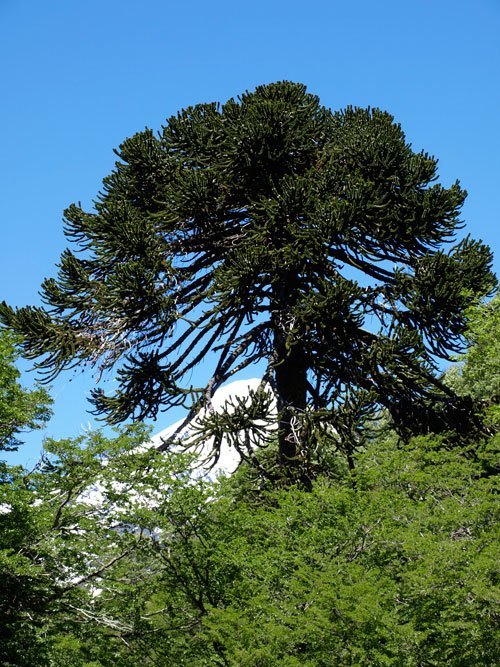
Photo by: Scott Zona
Soil for Growing
In the process of development, the monkey puzzle tree tolerates any type of soil, provided it drains properly. Suppose the soil has clay content and is likely to become soggy for a considerable period, then it is advisable to add fine grained sand to it while planting for supporting drainage.
Even though the monkey puzzle tree favors properly drained, moderately acidic and volcanic soil, it is adjustable to other soils on condition that it drains well. The climate, it favors is temperate and plenty of rain, with a temperature as low as -20oC. In its genus, it is the hardiest member, and also the one and only tree that is grown in mainland Britain, or distant from the extreme south in the United States.
The perfect soil is one which is medium (loamy), light (sandy) and heavy (clay) and properly drained. Appropriate pH: neutral, acidic and basic (alkaline) soils. Besides, it grows in partial shade (light woodland) or even without shade. It tolerates maritime exposure and chooses moist soil.
Planting
When you intend to plant a tender monkey tree, select an area where there is plenty of sunlight and moderate shade. In areas where there is total sunlight during summer, a little shade in the afternoon prevents the scorching sun to damage it, particularly when it is tender. Monkey trees normally favor a comparatively humid area; besides, it grows properly in the salty air and is the right option for coastal areas. The monkey puzzle tree is not the right one for cities; it never grows properly in urban locations, particularly in places where other trees grow, It is also possible to grow them in big containers, particularly where there is sub-freezing for a considerable time in winter, when it is possible to shift them in big containers.
Watering
The monkey puzzle tree needs dampness throughout, especially when it is tender and freshly planted. Its growth is enhanced by thorough watering once or twice weekly, in the initial stages. Also apply a mulch of organic matter to a thickness of 2 to 3 inches at the base of the tree, this will retain the moisture and cool the roots.
Temperature and Humidity
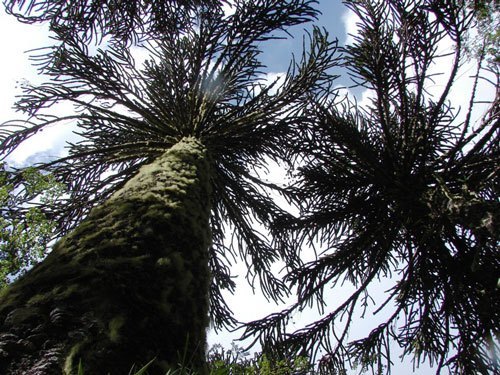
Photo by: Pato Novoa
Abundant rainfall and temperate climates is what the monkey puzzle tree prefers. It can even tolerate temperatures of -20°C or -4°F.
Care
The monkey puzzle trees, to a certain extent, do not need maintenance. Discarding the dead branches if any, is easy, provided you wear thick gloves and goggles, since you get a back bite. In case you are new to this field and inexperienced, go for an authorized arborist available locally for inspecting and pricing it for you. It will be advantageous to you. Regarding its health, there are chances of it losing a few branches at the bottom, as age advances; however, look out for someone to inspect it or have some nice snapshots of it and present them to garden centers available locally, they will give you expert opinions, if not exhibit them so that someone will be of help to you.
In the normal case, nothing much is needed; what is essential is, be certain that the soil in the zone of the roots (i.e. A radius equal to the tree’s height and a bit more) is not tampered by any human beings or disturbed by any lawn movers, aerate the soil This retains and increases the tree’s growth.
While taking care of a monkey puzzle tree, retain moisture in the soil, and fertilize it monthly once with a well balanced fertilizer. Once or twice a year, make use of a micro-nutrient. Container monkey puzzle trees show up fresh growth that is dull colored. This is a sign that it needs more fertilizers. Restrict feeding them during the winter when kept indoors, this permits a time for dormancy.
Never cut off branches that are growing while monitoring its growth. Of course, branches at the lower end start dying as age advances, when they are discarded.
Protect the branches and prune them only in cases where dead wood is seen. It is hard to work on dead branches, however, if not removed, it retards its growth.
Pest and Pesticides
When the required inputs are applied to a monkey puzzle tree, it is easy to grow them, but if grown in soggy and damp soil, canker, which is a fungal disease, is likely to appear. Apart from this insect, pests like thrips, mealy bugs and spider mites attack it, which leads to browning of the leaves. Controlling them is done by spraying an insecticidal soap, which is diluted by adding 5 tablespoons for every gallon. Also, there is a possibility of the monkey puzzle tree inviting a hard-boiled inset, which can be controlled by spraying horticultural oil on them. You get them at garden centers, in the pre-diluted state.
Wood Applications
This is a valuable ornamental timber tree, but the logging of wild trees now strictly prohibited. The wood of the monkey puzzle tree is very dense; as such, it is in great demand by the carvers and wood turners. It is even possible to turn wine glasses to a translucent state with this wood. Going in search of a wood turner is an excellent idea. Extreme heat is generated when it burns.
Varieties
The varieties of monkey puzzle trees are: Araucaria Bidwillii L, otherwise known as a False Monkey Puzzle Tree or Bunya Bunya Pine. This is hard to find in Texas landscapes.
The next one is Araucaria Heterophylla or House Pine or Australian pine. That this tree is found in tropical and subtropical evergreen regions and possesses pyramidal habits, having long internodes in the middle of tiered whorls in the horizontal branches and those branches arching a bit upwards; their branching is more exposed.

Having discovered a fondness for insects while pursuing her degree in Biology, Randi Jones was quite bugged to know that people usually dismissed these little creatures as “creepy-crawlies”.

